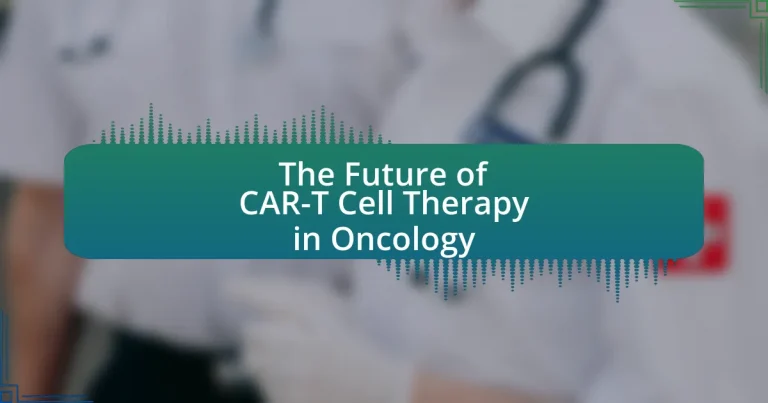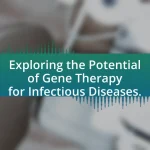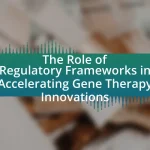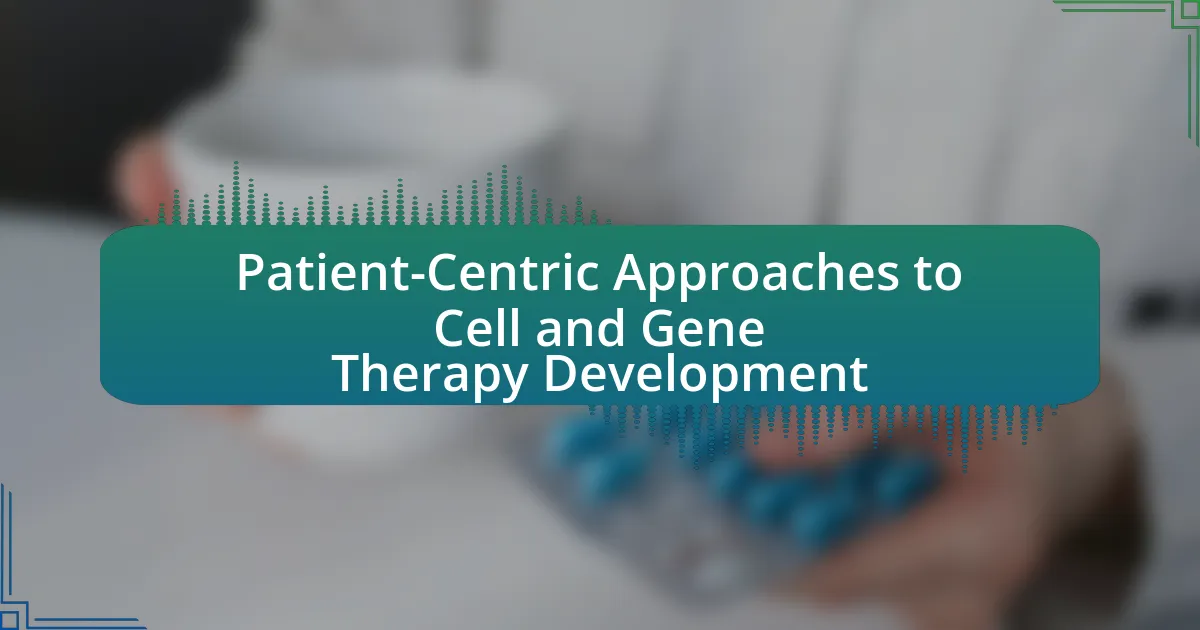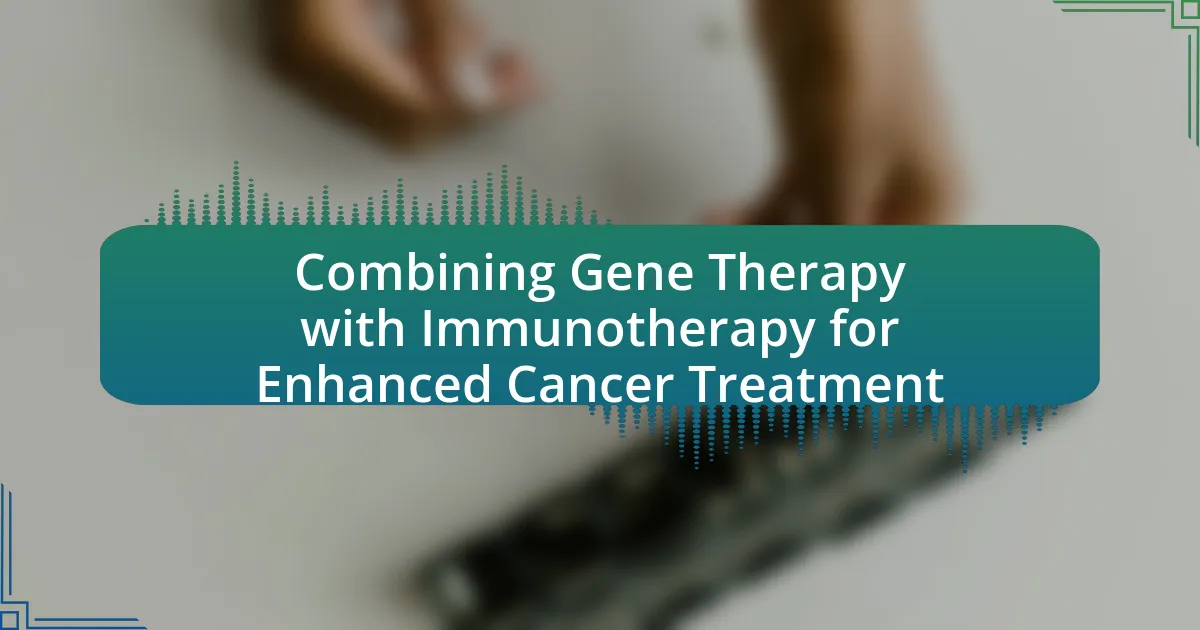CAR-T cell therapy is an advanced oncology treatment that involves modifying a patient’s T cells to target and eliminate cancer cells more effectively. This article explores the mechanisms of CAR-T cell therapy, its application in treating various hematological malignancies, and its potential for solid tumors. It discusses the benefits, challenges, and limitations of the therapy, including high costs and side effects. Additionally, the article highlights ongoing research aimed at improving CAR-T therapy’s efficacy and accessibility, as well as its role in personalized medicine and future prospects in oncology.
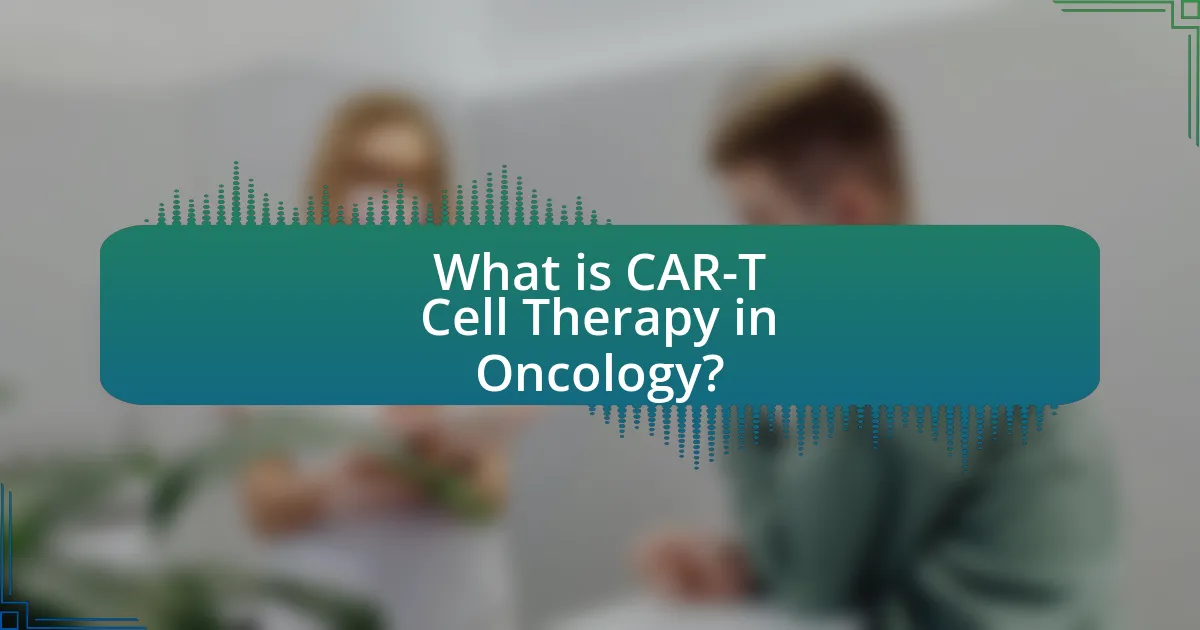
What is CAR-T Cell Therapy in Oncology?
CAR-T cell therapy in oncology is an innovative treatment that modifies a patient’s T cells to better recognize and attack cancer cells. This therapy involves extracting T cells from the patient’s blood, genetically engineering them to express chimeric antigen receptors (CARs) that target specific cancer antigens, and then reinfusing these modified cells back into the patient. Clinical studies have demonstrated the effectiveness of CAR-T cell therapy, particularly in treating certain types of blood cancers, such as acute lymphoblastic leukemia and certain lymphomas, with significant remission rates reported in trials.
How does CAR-T Cell Therapy work in treating cancer?
CAR-T cell therapy treats cancer by genetically modifying a patient’s T cells to recognize and attack cancer cells. This process begins with the extraction of T cells from the patient’s blood, which are then engineered in a laboratory to express chimeric antigen receptors (CARs) that specifically target antigens present on the surface of cancer cells. Once these modified T cells are multiplied and infused back into the patient, they can effectively identify and destroy the cancer cells. Clinical studies have demonstrated the efficacy of CAR-T cell therapy, particularly in hematologic malignancies, with some patients achieving complete remission. For instance, the approval of CAR-T therapies like Kymriah and Yescarta has shown significant response rates in treating certain types of leukemia and lymphoma, validating the therapeutic approach.
What are the key components of CAR-T Cell Therapy?
The key components of CAR-T Cell Therapy include chimeric antigen receptors (CARs), T cells, and a process for genetic modification. CARs are engineered proteins that enable T cells to recognize and bind to specific antigens on cancer cells. T cells, which are a type of immune cell, are harvested from the patient’s blood and then genetically modified to express CARs. This modification allows the T cells to effectively target and destroy cancer cells expressing the corresponding antigens. The entire process involves several steps, including T cell collection, genetic engineering, expansion of CAR-T cells, and infusion back into the patient. This therapy has shown significant efficacy in treating certain types of hematological malignancies, as evidenced by clinical trials demonstrating high response rates in patients with refractory B-cell malignancies.
How are T cells modified for CAR-T Cell Therapy?
T cells are modified for CAR-T Cell Therapy through a process that involves genetic engineering to express chimeric antigen receptors (CARs) on their surface. This modification is typically achieved using viral vectors, such as lentiviruses or retroviruses, which deliver the CAR gene into the T cells. Once the T cells are transduced with the CAR gene, they are expanded in the laboratory to create a large population of CAR-expressing T cells. These engineered T cells are then infused back into the patient, where they can recognize and attack cancer cells that express the specific antigen targeted by the CAR. The effectiveness of this approach is supported by clinical trials demonstrating significant tumor regression in patients with certain types of hematologic malignancies, such as acute lymphoblastic leukemia and certain lymphomas.
What types of cancers can be treated with CAR-T Cell Therapy?
CAR-T Cell Therapy can treat several types of cancers, primarily hematologic malignancies such as acute lymphoblastic leukemia (ALL), diffuse large B-cell lymphoma (DLBCL), and multiple myeloma. The therapy has shown significant efficacy in these cancers, with studies indicating that CAR-T cells can lead to complete remission in a substantial percentage of patients with ALL and DLBCL. For instance, clinical trials have demonstrated that approximately 70-90% of patients with relapsed or refractory ALL achieve remission after CAR-T treatment.
Which hematological malignancies are most responsive to CAR-T Cell Therapy?
Acute lymphoblastic leukemia (ALL) and certain types of non-Hodgkin lymphoma, particularly diffuse large B-cell lymphoma (DLBCL) and primary mediastinal B-cell lymphoma, are the hematological malignancies most responsive to CAR-T cell therapy. Clinical trials have demonstrated that CAR-T cell therapies, such as tisagenlecleucel and axicabtagene ciloleucel, achieve high remission rates in these conditions, with overall response rates exceeding 80% in some studies for ALL and significant efficacy reported in DLBCL. These results underscore the effectiveness of CAR-T cell therapy in treating these specific hematological malignancies.
Are there solid tumors that can benefit from CAR-T Cell Therapy?
Yes, certain solid tumors can benefit from CAR-T cell therapy. Research has shown that CAR-T cell therapy is being explored for various solid tumors, including glioblastoma, pancreatic cancer, and neuroblastoma. For instance, a study published in the Journal of Clinical Oncology demonstrated that CAR-T cells targeting the GD2 antigen showed promise in treating neuroblastoma, with some patients experiencing significant tumor reduction. Additionally, ongoing clinical trials are investigating the efficacy of CAR-T cells in targeting specific antigens present in other solid tumors, indicating a growing interest and potential in this area of oncology.
What are the potential benefits of CAR-T Cell Therapy?
CAR-T Cell Therapy offers significant benefits, including the potential for long-lasting remission in certain cancers. This innovative treatment harnesses the patient’s own immune cells, genetically modifying them to better recognize and attack cancer cells. Clinical studies have shown that CAR-T therapies, such as those targeting CD19 in B-cell malignancies, can lead to complete responses in over 40% of patients, demonstrating its effectiveness. Additionally, CAR-T Cell Therapy can provide a personalized approach to cancer treatment, as it is tailored to the individual’s specific cancer profile, enhancing the likelihood of successful outcomes.
How does CAR-T Cell Therapy compare to traditional cancer treatments?
CAR-T Cell Therapy offers a targeted approach to cancer treatment that differs significantly from traditional methods such as chemotherapy and radiation. Unlike traditional treatments that indiscriminately attack rapidly dividing cells, CAR-T Cell Therapy utilizes genetically modified T cells to specifically target and destroy cancer cells, particularly in hematological malignancies like certain leukemias and lymphomas. Clinical trials have demonstrated that CAR-T therapies can lead to higher remission rates; for instance, studies show that up to 90% of patients with certain types of leukemia achieve remission after CAR-T treatment, compared to lower remission rates with conventional therapies. This specificity reduces collateral damage to healthy tissues, resulting in fewer side effects compared to traditional treatments, which often lead to significant toxicity and long-term complications.
What success rates have been observed with CAR-T Cell Therapy?
CAR-T Cell Therapy has demonstrated success rates of approximately 70-90% in achieving complete remission for certain hematologic malignancies, particularly in patients with acute lymphoblastic leukemia (ALL) and certain types of non-Hodgkin lymphoma. Clinical trials, such as those published in the New England Journal of Medicine, have shown that around 83% of patients with ALL achieved complete remission after receiving CAR-T therapy. Additionally, studies indicate that the overall response rate for diffuse large B-cell lymphoma (DLBCL) can reach up to 50-60%. These statistics underscore the effectiveness of CAR-T Cell Therapy in treating specific cancers, highlighting its potential in oncology.
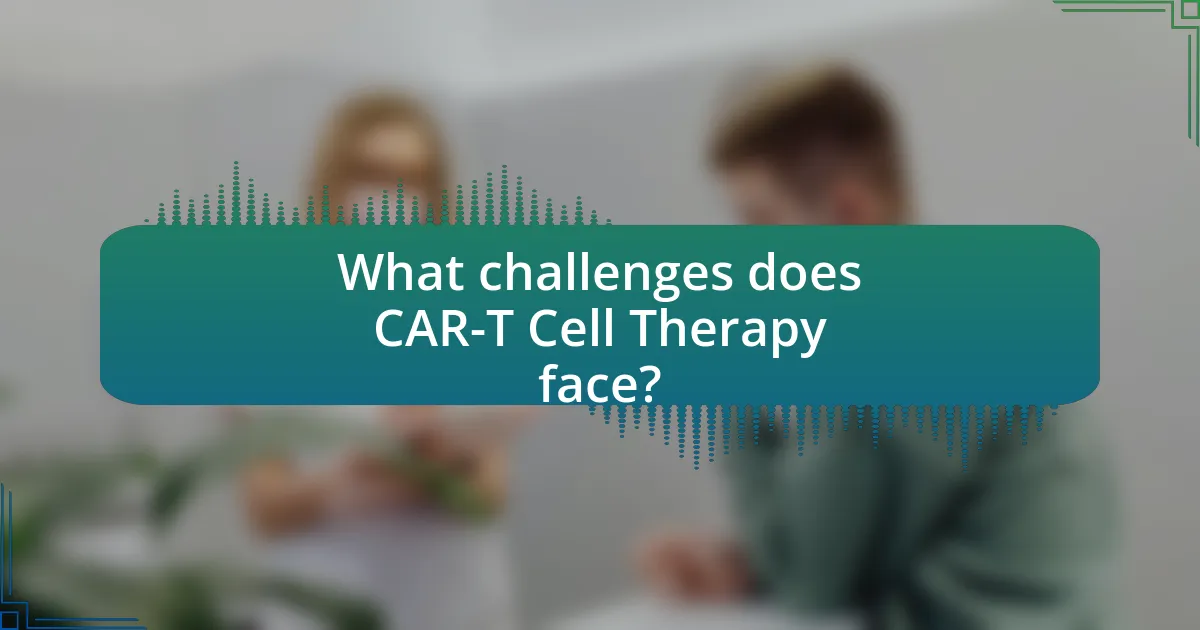
What challenges does CAR-T Cell Therapy face?
CAR-T Cell Therapy faces several significant challenges, including high treatment costs, potential severe side effects, and limited effectiveness against solid tumors. The high costs, often exceeding $373,000 per patient, restrict access to this innovative therapy, particularly in low-resource settings. Severe side effects, such as cytokine release syndrome and neurotoxicity, can complicate treatment and require intensive monitoring and management. Additionally, CAR-T therapies have shown limited success in treating solid tumors due to the tumor microenvironment and antigen heterogeneity, which can hinder the effectiveness of the engineered T cells. These challenges highlight the need for ongoing research and development to improve the safety, accessibility, and efficacy of CAR-T Cell Therapy in oncology.
What are the common side effects associated with CAR-T Cell Therapy?
Common side effects associated with CAR-T Cell Therapy include cytokine release syndrome (CRS), neurotoxicity, fever, fatigue, and low blood cell counts. CRS occurs in a significant number of patients, with studies indicating that up to 90% of individuals may experience some degree of this reaction, which can range from mild to severe. Neurotoxicity, characterized by confusion, seizures, or difficulty speaking, affects approximately 30-50% of patients. Additionally, patients often report fatigue and fever, which are common responses to the immune activation caused by the therapy. Low blood cell counts, including anemia and thrombocytopenia, can also occur, leading to increased risk of infections and bleeding. These side effects highlight the importance of monitoring and managing patient responses during and after treatment.
How can cytokine release syndrome be managed in patients?
Cytokine release syndrome (CRS) can be managed in patients through the administration of tocilizumab, an interleukin-6 receptor antagonist, which has been shown to effectively reduce symptoms and improve outcomes. Clinical studies indicate that tocilizumab can significantly decrease fever and other inflammatory symptoms associated with CRS, as evidenced by a study published in the Journal of Clinical Oncology, which reported that 70% of patients experienced symptom relief after treatment. Additionally, corticosteroids may be used in severe cases to further mitigate inflammation and manage symptoms. Monitoring and supportive care are also critical components of CRS management to ensure patient safety and comfort during treatment.
What long-term effects should patients be aware of?
Patients should be aware that long-term effects of CAR-T cell therapy can include cytokine release syndrome, neurotoxicity, and potential secondary malignancies. Cytokine release syndrome may lead to symptoms such as fever, fatigue, and hypotension, which can occur days to weeks after treatment. Neurotoxicity can manifest as confusion, seizures, or other neurological symptoms, typically appearing within the first few weeks post-infusion. Additionally, there is a risk of developing secondary malignancies due to the immunomodulatory effects of the therapy, as evidenced by studies indicating that patients may have an increased risk of secondary cancers years after treatment. These long-term effects necessitate ongoing monitoring and management by healthcare providers.
What are the limitations of CAR-T Cell Therapy?
CAR-T cell therapy has several limitations, including the potential for severe side effects, limited effectiveness against solid tumors, and high treatment costs. Severe side effects, such as cytokine release syndrome and neurotoxicity, can occur in a significant number of patients, impacting their overall health and requiring intensive management. Additionally, CAR-T cells often struggle to penetrate solid tumors due to the tumor microenvironment, which can limit their effectiveness compared to hematological cancers. The high costs associated with CAR-T therapy, often exceeding several hundred thousand dollars per patient, can restrict access and pose economic challenges for healthcare systems. These limitations highlight the need for ongoing research to improve the safety, efficacy, and accessibility of CAR-T cell therapy in oncology.
Why is access to CAR-T Cell Therapy limited in some regions?
Access to CAR-T Cell Therapy is limited in some regions primarily due to high costs and insufficient healthcare infrastructure. The therapy often requires specialized facilities and trained personnel, which may not be available in all areas. Additionally, the price of CAR-T treatments can exceed $373,000 per patient, making it financially prohibitive for many healthcare systems and patients. Regulatory hurdles and varying approval statuses across countries further restrict access, as some regions may not have approved CAR-T therapies for use. These factors collectively contribute to the limited availability of CAR-T Cell Therapy in certain geographic locations.
What are the cost implications of CAR-T Cell Therapy?
CAR-T Cell Therapy has significant cost implications, often exceeding $373,000 per patient for the treatment itself. This high cost is attributed to the complex manufacturing process, which involves genetically modifying a patient’s T cells, as well as the associated hospitalizations and supportive care required during and after treatment. Additionally, the overall financial burden can increase due to potential complications and the need for long-term follow-up care, which can add tens of thousands of dollars to the total expense. Studies indicate that while CAR-T therapy can lead to durable remissions in certain cancers, the economic impact remains a critical consideration for healthcare systems and patients alike.

What does the future hold for CAR-T Cell Therapy in Oncology?
The future of CAR-T cell therapy in oncology is poised for significant advancements, including broader applications beyond hematological malignancies to solid tumors. Ongoing research is focusing on improving the efficacy and safety of CAR-T therapies, with innovations such as next-generation CAR constructs, combination therapies, and enhanced targeting mechanisms. For instance, studies have shown that modifying CAR-T cells to express additional co-stimulatory signals can enhance their persistence and anti-tumor activity, as evidenced by research published in “Nature Reviews Clinical Oncology” by June et al. (2020). Furthermore, the development of off-the-shelf CAR-T products aims to reduce manufacturing times and costs, making these therapies more accessible to patients. Overall, the trajectory of CAR-T cell therapy indicates a promising future with the potential for improved outcomes in a wider range of cancers.
How is research advancing CAR-T Cell Therapy?
Research is advancing CAR-T cell therapy through innovations in genetic engineering, improved targeting mechanisms, and enhanced safety profiles. Recent studies have demonstrated the efficacy of next-generation CAR-T cells that utilize dual-targeting strategies, allowing for more precise elimination of cancer cells while sparing healthy tissues. For instance, a study published in the journal “Nature” by June et al. (2020) highlighted the development of CAR-T cells that can simultaneously target multiple antigens, significantly reducing the risk of tumor escape and relapse. Additionally, advancements in safety features, such as suicide genes that can be activated to eliminate CAR-T cells in case of severe adverse effects, have been shown to improve patient outcomes and reduce toxicity, as evidenced by clinical trials reported in “Blood” by Neelapu et al. (2018). These research efforts collectively enhance the effectiveness and safety of CAR-T cell therapy, paving the way for its broader application in oncology.
What new targets are being explored for CAR-T Cell Therapy?
New targets being explored for CAR-T Cell Therapy include solid tumors and specific antigens such as CD19, CD22, and BCMA, as well as novel targets like GPRC5D and CLDN18.2. Research indicates that targeting these antigens can enhance the efficacy of CAR-T therapies in treating various cancers, including multiple myeloma and pancreatic cancer. For instance, studies have shown that CAR-T cells targeting GPRC5D demonstrate promising results in preclinical models of multiple myeloma, indicating a potential for broader application in solid tumors.
How are combination therapies enhancing CAR-T Cell Therapy effectiveness?
Combination therapies enhance CAR-T cell therapy effectiveness by addressing tumor microenvironment challenges and improving immune response. For instance, combining CAR-T cell therapy with immune checkpoint inhibitors has shown to increase the persistence and activity of CAR-T cells against tumors, as evidenced by studies demonstrating improved overall survival rates in patients with refractory cancers. Additionally, incorporating agents that target tumor metabolism or enhance T cell activation can further augment the efficacy of CAR-T therapies, leading to more robust anti-tumor responses. These strategies are supported by clinical trials indicating that combination approaches can overcome resistance mechanisms and improve patient outcomes in oncology.
What role will CAR-T Cell Therapy play in personalized medicine?
CAR-T Cell Therapy will play a pivotal role in personalized medicine by providing tailored treatment options that target specific cancer cell antigens unique to individual patients. This therapy involves engineering a patient’s own T cells to recognize and attack cancer cells, which enhances treatment efficacy and minimizes side effects compared to traditional therapies. Clinical studies have demonstrated that CAR-T therapies, such as those targeting CD19 in B-cell malignancies, can lead to significant remission rates, showcasing their potential in customizing cancer treatment based on the patient’s unique tumor profile.
How can genetic profiling improve CAR-T Cell Therapy outcomes?
Genetic profiling can improve CAR-T cell therapy outcomes by enabling personalized treatment strategies that target specific genetic mutations in tumors. By analyzing the genetic makeup of both the patient’s cancer cells and the CAR-T cells, clinicians can identify the most effective targets for the engineered T cells, enhancing their ability to recognize and attack cancer cells. Studies have shown that patients whose tumors have specific genetic alterations respond better to tailored CAR-T therapies, leading to higher remission rates and improved overall survival. For instance, research published in “Nature Medicine” by June et al. demonstrated that genetic profiling of tumors can guide the selection of CAR-T cell targets, resulting in more effective treatments for patients with refractory cancers.
What are the prospects for off-the-shelf CAR-T products?
The prospects for off-the-shelf CAR-T products are promising, as they offer the potential for widespread accessibility and reduced manufacturing costs compared to personalized CAR-T therapies. Off-the-shelf CAR-T products can be produced in advance and stored, allowing for quicker patient treatment and addressing the current limitations of individualized therapies that require extensive time for patient-specific manufacturing. Recent advancements in technology, such as improved gene editing techniques and the development of universal CAR-T cells, support the feasibility of these products. Clinical trials have shown encouraging results, indicating that off-the-shelf CAR-T therapies can effectively target various cancers, further validating their potential in the oncology landscape.
What best practices should be followed for CAR-T Cell Therapy implementation?
Best practices for CAR-T Cell Therapy implementation include thorough patient selection, comprehensive pre-treatment evaluation, and effective management of potential side effects. Patient selection should focus on individuals with specific hematologic malignancies, such as certain types of leukemia and lymphoma, where CAR-T therapy has shown significant efficacy. A pre-treatment evaluation must include assessing the patient’s overall health, tumor burden, and prior therapies to ensure they are suitable candidates. Additionally, managing side effects, particularly cytokine release syndrome and neurotoxicity, requires a well-defined protocol for monitoring and intervention, as evidenced by clinical guidelines from organizations like the American Society of Clinical Oncology. These practices enhance the safety and effectiveness of CAR-T Cell Therapy, ultimately improving patient outcomes.
